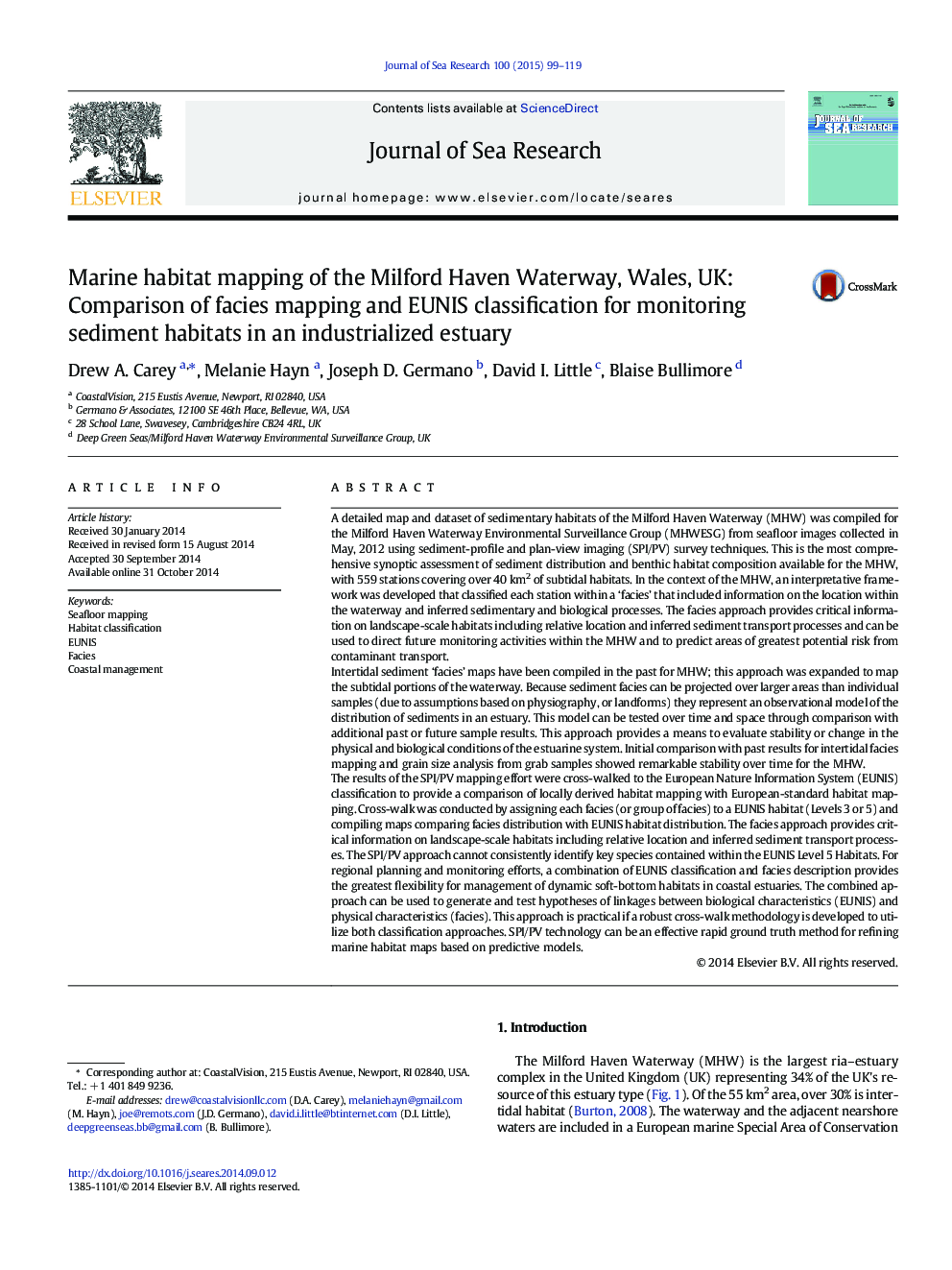| کد مقاله | کد نشریه | سال انتشار | مقاله انگلیسی | نسخه تمام متن |
|---|---|---|---|---|
| 4549614 | 1627474 | 2015 | 21 صفحه PDF | دانلود رایگان |

• High resolution ground truth seabed survey was conducted in Milford Haven Waterway, UK.
• Facies models provide effective predictors of habitat distribution at a fine scale.
• Sediment profile and plan-view imaging are suitable for facies description of subtidal habitats.
• Facies can be cross-walked to Level 5 European Nature Information System (EUNIS) habitats.
• Rapid fine scale ground truth methods can improve accuracy of MESH mapping efforts.
A detailed map and dataset of sedimentary habitats of the Milford Haven Waterway (MHW) was compiled for the Milford Haven Waterway Environmental Surveillance Group (MHWESG) from seafloor images collected in May, 2012 using sediment-profile and plan-view imaging (SPI/PV) survey techniques. This is the most comprehensive synoptic assessment of sediment distribution and benthic habitat composition available for the MHW, with 559 stations covering over 40 km2 of subtidal habitats. In the context of the MHW, an interpretative framework was developed that classified each station within a ‘facies’ that included information on the location within the waterway and inferred sedimentary and biological processes. The facies approach provides critical information on landscape-scale habitats including relative location and inferred sediment transport processes and can be used to direct future monitoring activities within the MHW and to predict areas of greatest potential risk from contaminant transport.Intertidal sediment ‘facies’ maps have been compiled in the past for MHW; this approach was expanded to map the subtidal portions of the waterway. Because sediment facies can be projected over larger areas than individual samples (due to assumptions based on physiography, or landforms) they represent an observational model of the distribution of sediments in an estuary. This model can be tested over time and space through comparison with additional past or future sample results. This approach provides a means to evaluate stability or change in the physical and biological conditions of the estuarine system. Initial comparison with past results for intertidal facies mapping and grain size analysis from grab samples showed remarkable stability over time for the MHW.The results of the SPI/PV mapping effort were cross-walked to the European Nature Information System (EUNIS) classification to provide a comparison of locally derived habitat mapping with European-standard habitat mapping. Cross-walk was conducted by assigning each facies (or group of facies) to a EUNIS habitat (Levels 3 or 5) and compiling maps comparing facies distribution with EUNIS habitat distribution. The facies approach provides critical information on landscape-scale habitats including relative location and inferred sediment transport processes. The SPI/PV approach cannot consistently identify key species contained within the EUNIS Level 5 Habitats. For regional planning and monitoring efforts, a combination of EUNIS classification and facies description provides the greatest flexibility for management of dynamic soft-bottom habitats in coastal estuaries. The combined approach can be used to generate and test hypotheses of linkages between biological characteristics (EUNIS) and physical characteristics (facies). This approach is practical if a robust cross-walk methodology is developed to utilize both classification approaches. SPI/PV technology can be an effective rapid ground truth method for refining marine habitat maps based on predictive models.
Figure optionsDownload as PowerPoint slide
Journal: Journal of Sea Research - Volume 100, June 2015, Pages 99–119